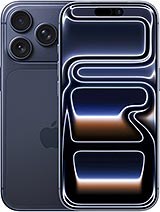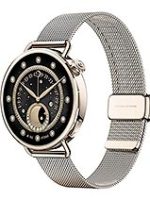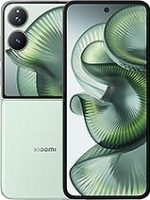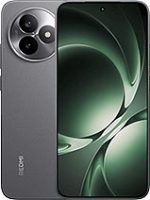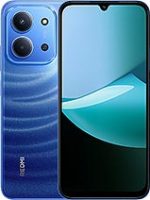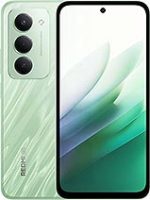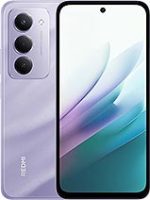iPhone 17 vs 17 Pro vs 17 Pro Max
iPhone 17 vs 17 Pro vs 17 Pro Max: Which 2025 iPhone Should You Buy?
The iPhone lineup continues to evolve, and with the iPhone 17 series, Apple has further refined the distinctions between its standard and Pro models. Choosing between the base iPhone 17, the advanced 17 Pro, and the massive 17 Pro Max is more than just a question of size and price—it’s about identifying which features are essential for your daily life.
This comprehensive iPhone 17 series comparison guide will dissect every key difference, from the chipset and cameras to the display technology and battery, ensuring you make the perfect choice.
At a Glance: The Core Differences Summarized
Think of the lineup as a ladder of escalating capability:
- iPhone 17: The intelligent choice for most users, offering powerful core features and excellent value.
- iPhone 17 Pro: The creative powerhouse, adding a pro-level camera system, a more versatile telephoto lens, and the absolute peak of performance.
- iPhone 17 Pro Max: The ultimate iPhone experience, combining everything the Pro offers with the largest display and the longest battery life available.
Design & Display: More Than Just Size
While all three models feature the durable Ceramic Shield front and a aerospace-grade aluminum or titanium frame, the display technology is a key differentiator.
- iPhone 17: Features a bright and vibrant 6.1-inch Super Retina XDR display with ProMotion technology, now standard for smoother scrolling and responsiveness. It’s the perfect best iPhone 17 for everyday use with a comfortable, one-hand-friendly size.
- iPhone 17 Pro: Steps up to a 6.1-inch ProMotion display with an even higher peak brightness and Apple’s hyper-responsive ProMotion technology with Always-On Display. This is ideal for quickly glancing at information.
- iPhone 17 Pro Max: Boasts a massive 6.9-inch Super Retina XDR display with all the Pro features. It offers an immersive canvas for watching movies and playing games on iPhone 17 Pro Max. Its size is its defining characteristic.
Verdict: For the best media experience, the Pro Max is unmatched. For a balance of quality and portability, the standard Pro and base model are excellent.
Performance & Chipset: A Tale of Two Processors
This year, the performance gap is more defined than ever.
- iPhone 17: Powered by the robust A18 chip, which delivers exceptional speed and efficiency for all daily tasks. Including gaming and multitasking. It’s more than powerful enough for 99% of users.
- iPhone 17 Pro & 17 Pro Max: These models are equipped with the next-generation A18 Pro chip. This chip features an additional GPU core and enhanced Neural Engine, making it the clear winner for demanding tasks like pro-level video editing and advanced mobile gaming. If you are a power user or creative professional, the A18 Pro is designed for you.
Verdict: The A18 Pro in the Pro models offers future-proof performance for the most demanding applications.
Camera System: The Biggest Dividing Line
The camera is where the “Pro” name truly earns its keep, making this a critical decision for photographers and videographers.
- iPhone 17: Carries a powerful dual-camera system with a 48MP Main and a 12MP Ultra Wide. It takes stunning photos and video in most conditions and is a fantastic best camera phone for casual photography.
- iPhone 17 Pro: Features a triple-camera array: a 48MP Main with a new larger sensor, a 12MP Ultra Wide. One critical 12MP Telephoto lens with 3x optical zoom. This allows for professional-quality portraits and shooting from a distance without losing clarity.
- iPhone 17 Pro Max: Includes all the Pro camera features but takes it a step further by incorporating an advanced 5x Tetraprism Telephoto lens for even greater optical zoom. This makes it the undisputed best iPhone for professional photography and videography in the lineup.
Verdict: For creative control and optical zoom, the Pro models are essential. The Pro Max offers the most versatile camera system Apple has to offer.
Battery Life & Charging: All-Day vs. All-Weekend
Battery life scales directly with the size of the device.
- iPhone 17: Offers solid all-day battery life, perfect for the average user.
- iPhone 17 Pro: Provides strong all-day endurance, often lasting into a second day with moderate use.
- iPhone 17 Pro Max: Houses the largest battery of the three, consistently delivering the longest battery life in any iPhone 17 model. It’s the only phone in the lineup that can truly be called a two-day battery for most users.
Price & Value: Making the Right Investment
Naturally, price is a major factor. The iPhone 17 is the best value iPhone 17 for those who want a premium experience without the Pro price tag. The Pro version demands a premium for its advanced camera and A18 Pro chip. The iPhone 17 Pro Max sits at the top, commanding the highest price for its unparalleled combination of screen real estate, camera versatility, and battery endurance.
Final Conclusion: Which iPhone 17 is Right for You?
Choose the iPhone 17 if: You want a fantastic, no-compromise iPhone for social media, communication, streaming, and great everyday photos. It delivers 90% of the Pro experience for a significantly lower price.
Choose the iPhone 17 Pro if. You are a creative pro, a serious mobile gamer, or a photography enthusiast who values the telephoto lens and the absolute peak of performance in a compact form factor.
Choose the iPhone 17 Pro Max if: You demand the very best. You want the largest screen for media and work, the most versatile camera system with superior zoom, and you refuse to compromise on battery life ever again.
By understanding these key differences, you can confidently select the iPhone 17, 17 Pro, or 17 Pro Max that perfectly aligns with your lifestyle and budget.
Get more insights of other phone on our Comparison Page, like iPhone 17 vs 17 Pro vs 17 Pro Max.
NETWORK
| Technology | GSM / CDMA / HSPA / EVDO / LTE / 5G GSM / CDMA / HSPA / EVDO / LTE / 5G GSM / CDMA / HSPA / EVDO / LTE / 5G |
| 2G bands | GSM 850 / 900 / 1800 / 1900 GSM 850 / 900 / 1800 / 1900 GSM 850 / 900 / 1800 / 1900 |
| 3G bands | HSDPA 850 / 900 / 1700(AWS) / 1900 / 2100 HSDPA 850 / 900 / 1700(AWS) / 1900 / 2100 HSDPA 850 / 900 / 1700(AWS) / 1900 / 2100 |
| 4G bands | 1, 2, 3, 4, 5, 7, 8, 12, 13, 17, 18, 19, 20, 25, 26, 28, 30, 32, 34, 38, 39, 40, 41, 42, 48, 53, 66 - A3523 1, 2, 3, 4, 5, 7, 8, 12, 13, 17, 18, 19, 20, 25, 26, 28, 30, 32, 34, 38, 39, 40, 41, 42, 48, 53, 66 - A3526 1, 2, 3, 4, 5, 7, 8, 12, 13, 17, 18, 19, 20, 25, 26, 28, 30, 32, 34, 38, 39, 40, 41, 42, 48, 53, 66 - A3520 |
| 5G bands | 1, 2, 3, 5, 7, 8, 12, 20, 25, 26, 28, 30, 38, 40, 41, 48, 53, 66, 70, 75, 77, 78, 79 SA/NSA/Sub6 - A3523 1, 2, 3, 5, 7, 8, 12, 20, 25, 26, 28, 30, 38, 40, 41, 48, 53, 66, 70, 75, 77, 78, 79 SA/NSA/Sub6 - A3526 1, 2, 3, 5, 7, 8, 12, 20, 25, 26, 28, 30, 38, 40, 41, 48, 53, 66, 70, 75, 77, 78, 79 SA/NSA/Sub6 - A3520 |
| Speed | HSPA, LTE, 5G, EV-DO Rev.A 3.1 Mbps HSPA, LTE, 5G, EV-DO Rev.A 3.1 Mbps HSPA, LTE, 5G, EV-DO Rev.A 3.1 Mbps |
LAUNCH
| Announced | 2025, September 09 2025, September 09 2025, September 09 |
| Status | Available Available Available |
| Released | Available. Released 2025, September 19 Available. Released 2025, September 19 Available. Released 2025, September 19 |
BODY
| Dimensions | 150 x 71.9 x 8.8 mm (5.91 x 2.83 x 0.35 in) 163.4 x 78 x 8.8 mm (6.43 x 3.07 x 0.35 in) 149.6 x 71.5 x 8 mm (5.89 x 2.81 x 0.31 in) |
| Weight | 206 g (7.27 oz) 233 g (8.22 oz) 177 g (6.24 oz) |
| Build |
Glass front (Ceramic Shield 2), aluminum alloy frame, aluminum alloy back/ glass back (Ceramic Shield) IP68 dust tight and water resistant (immersible up to 6m for 30 min)Apple Pay (Visa, MasterCard, AMEX certified) Glass front (Ceramic Shield 2), aluminum alloy frame, aluminum alloy back/ glass back (Ceramic Shield) IP68 dust tight and water resistant (immersible up to 6m for 30 min)Apple Pay (Visa, MasterCard, AMEX certified) Glass front (Ceramic Shield 2), aluminum frame, glass back IP68 dust tight and water resistant (immersible up to 6m for 30 min)Apple Pay (Visa, MasterCard, AMEX certified) |
| SIM SIM (Subscriber Identity Module) is a small card that contains mobile network subscriber's account information. This allows the phone using the card to attach to a mobile network. The SIM card is most commonly associated with GSM and UMTS mobile networks. Moving a SIM card from one phone to another allows a subscriber to switch mobile phones without having to contact their mobile network carrier. SIM cards can also be used by a phone to store limited amounts of data, such as phone numbers and text messages. | Nano-SIM + eSIM + eSIM (max 2 at a time; International)eSIM + eSIM (8 or more, max 2 at a time; USA)Nano-SIM + Nano-SIM (China) Nano-SIM + eSIM + eSIM (max 2 at a time; International)eSIM + eSIM (8 or more, max 2 at a time; USA)Nano-SIM + Nano-SIM (China) Nano-SIM + eSIM + eSIM (max 2 at a time; International)eSIM + eSIM (8 or more, max 2 at a time; USA)Nano-SIM + Nano-SIM (China) |
DISPLAY
| Type Design Type called form factor refers to a mobile phone's size, shape, and style as well as the layout and position of major components of phone. There are three major form factors seen in mobile phones => bar phones, folding phones and sliding phones. | LTPO Super Retina XDR OLED, 120Hz, HDR10, Dolby Vision, 1000 nits (typ), 1600 nits (HBM), 3000 nits (peak) LTPO Super Retina XDR OLED, 120Hz, HDR10, Dolby Vision, 1000 nits (typ), 1600 nits (HBM), 3000 nits (peak) LTPO Super Retina XDR OLED, 120Hz, HDR10, 1000 nits (typ), 1600 nits (HBM), 3000 nits (peak) |
| Size | 6.3 inches, 96.4 cm2 (~89.4% screen-to-body ratio) 6.9 inches, 115.6 cm2 (~90.7% screen-to-body ratio) 6.3 inches, 96.4 cm2 (~90.1% screen-to-body ratio) |
| Resolution | 1206 x 2622 pixels, 19.5:9 ratio (~460 ppi density) 1320 x 2868 pixels, 19.5:9 ratio (~460 ppi density) 1206 x 2622 pixels, 19.5:9 ratio (~460 ppi density) |
| Protection | Ceramic Shield 2, Mohs level 5 Ceramic Shield 2, Mohs level 5 Ceramic Shield 2, Mohs level 5 |
PLATFORM
| OS | iOS 26 iOS 26 iOS 26 |
| Chipset Chipset is a group of integrated circuits designed to perform one or a more dedicated functions, often with real time computing constraints, Popular smartphones are equipped with more advanced embedded chipsets that can do many different tasks depending on their programming. | Apple A19 Pro (3 nm) Apple A19 Pro (3 nm) Apple A19 (3 nm) |
| CPU CPU (Central Processing Unit) mostly known as processors, CPU processes instructions in order to carry out certain functions that make your device operate properly. Processors are often described as the brain of computers, smartphones and tablets, Smartphones and tablets rely on processors to carry out their every task, Processors are an incredibly important factor in selecting any type of computing device, including your smartphone. | Hexa-core (2x4.26 GHz + 4xX.X GHz) Hexa-core (2x4.26 GHz + 4xX.X GHz) Hexa-core (2x4.26 GHz + 4xX.X GHz) |
| GPU GPU (Graphics Processing Unit) is a single-chip processor designed to rapidly manipulate and alter memory to accelerate the creation of images in a frame buffer intended for output to a display, This includes things such as lighting effects, object transformations, and 3D motion. | Apple GPU (6-core graphics) Apple GPU (6-core graphics) Apple GPU (5-core graphics) |
MEMORY
| Card slot | No No No |
| Internal Storage Internal Storage is a data storage space (flash memory) mostly used in smartphones, tablets and other electronic devices where operating system, apps, music, photos, videos, files and other user data Is stored. | 256GB 12GB RAM, 512GB 12GB RAM, 1TB 12GB RAM 256GB 12GB RAM, 512GB 12GB RAM, 1TB 12GB RAM, 2TB 12GB RAM 256GB 8GB RAM, 512GB 8GB RAM |
MAIN CAMERA
| Dual |
48 MP, f/1.6, 26mm (wide), 1/1.56", 1.0µm, dual pixel PDAF, sensor-shift OIS 48 MP, f/2.2, 13mm, 120˚ (ultrawide), 1/2.55", 0.7µm, PDAF |
| Triple |
48 MP, f/1.6, 24mm (wide), 1/1.28", 1.22µm, dual pixel PDAF, sensor-shift OIS 48 MP, f/2.8, 100mm (periscope telephoto), 1/2.55", 0.7µm, PDAF, 3D sensor‑shift OIS, 4x optical zoom 48 MP, f/2.2, 13mm, 120˚ (ultrawide), 1/2.55", 0.7µm, PDAF TOF 3D LiDAR scanner (depth) 48 MP, f/1.6, 24mm (wide), 1/1.28", 1.22µm, dual pixel PDAF, sensor-shift OIS 48 MP, f/2.8, 100mm (periscope telephoto), 1/2.55", 0.7µm, PDAF, 3D sensor‑shift OIS, 4x optical zoom 48 MP, f/2.2, 13mm, 120˚ (ultrawide), 1/2.55", 0.7µm, PDAF TOF 3D LiDAR scanner (depth) |
| Features | Dual-LED dual-tone flash, HDR (photo/panorama) Dual-LED dual-tone flash, HDR (photo/panorama) Dual-LED dual-tone flash, HDR (photo/panorama) |
| Video | 4K@24/25/30/60fps, 1080p@25/30/60/120fps, gyro-EIS 4K@24/25/30/60fps, 1080p@25/30/60/120fps, gyro-EIS 4K@24/25/30/60fps, 1080p@25/30/60/120fps, gyro-EIS |
SELFIE CAMERA
| Single Front Camera | 18 MP multi-aspect, f/1.9, (wide), PDAF, OISSL 3D, (depth/biometrics sensor) 18 MP multi-aspect, f/1.9, (wide), PDAF, OISSL 3D, (depth/biometrics sensor) 18 MP multi-aspect, f/1.9, (wide), PDAF, OISSL 3D, (depth/biometrics sensor) |
| Features | HDR, Dolby Vision HDR, 3D (spatial) audio, stereo sound rec., ProRes RAW, Apple Log 2 HDR, Dolby Vision HDR, 3D (spatial) audio, stereo sound rec., ProRes RAW, Apple Log 2 HDR, Dolby Vision HDR, 3D (spatial) audio, stereo sound rec. |
| Video | 4K@24/25/30/60fps, 1080p@25/30/60/120fps, gyro-EIS 4K@24/25/30/60fps, 1080p@25/30/60/120fps, gyro-EIS 4K@24/25/30/60fps, 1080p@25/30/60/120fps, gyro-EIS |
| Front Flash Flash Light => There is commonly two types of flash lights are used in camera mobile phones, LED Flash (LED flash offers lower power consumption with drive circuitry that takes up very little room, LEDs can be strobed faster than any other light source), Xenon Flash (xenon flash produces an extremely intense full-spectrum white light for a very short duration) |
SOUND
| Loudspeaker | Yes, with stereo speakers Yes, with stereo speakers Yes, with stereo speakers |
| 3.5mm jack | No No No |
COMMS
| WLAN | Wi-Fi 802.11 a/b/g/n/ac/6e/7, tri-band, hotspot Wi-Fi 802.11 a/b/g/n/ac/6e/7, tri-band, hotspot Wi-Fi 802.11 a/b/g/n/ac/6/7, tri-band, hotspot |
| Bluetooth | 6.0, A2DP, LE 6.0, A2DP, LE 6.0, A2DP, LE |
| GPS GPS The Global Positioning System is a satellite-based radio navigation system, GPS permits users to determine their position, velocity and the time 24 hours a day, in all weather, anywhere in the world, In order to locate your position, your device or GPS receiver must have a clear view of the sky. | GPS (L1+L5), GLONASS, GALILEO, BDS, QZSS, NavIC GPS (L1+L5), GLONASS, GALILEO, BDS, QZSS, NavIC GPS (L1+L5), GLONASS, GALILEO, BDS, QZSS, NavIC |
| NFC NFC (Near field communication) is a set of standards for smartphones and similar devices to establish peer-to-peer radio communications with each other by touching them together or bringing them into proximity, usually no more than a few inches. | Yes Yes Yes |
| Infrared port | Not found Not found Not found |
| Radio | No No No |
| USB | USB Type-C 3.2 Gen 2, DisplayPort USB Type-C 3.2 Gen 2, DisplayPort USB Type-C 2.0, DisplayPort |
FEATURES
| Sensors Sensors are electronic components that detects and responds to some type of input from the physical environment. The specific input could be light, heat, motion, moisture, pressure and location, The output is generally a signal that is converted to use in computing systems, a location sensor, such as a GPS receiver is able to detect current location of your electronic device. | Face ID, accelerometer, gyro, proximity, compass, barometer Face ID, accelerometer, gyro, proximity, compass, barometer Face ID, accelerometer, gyro, proximity, compass, barometer |
BATTERY
| Type Design Type called form factor refers to a mobile phone's size, shape, and style as well as the layout and position of major components of phone. There are three major form factors seen in mobile phones => bar phones, folding phones and sliding phones. | Li-Ion 3988 mAh - Nano SIM modelLi-Ion 4252 mAh - eSIM only model Li-Ion 4832 mAh - Nano SIM modelLi-Ion 5088 mAh - eSIM only model Li-Ion 3692 mAh |
| Charging | Wired, PD3.2, AVS, 50% in 20 min25W wireless MagSafe/Qi2, 50% in 30 min (15W - China)4.5W reverse wired Wired, PD3.2, AVS, 50% in 20 min25W wireless MagSafe/Qi2, 50% in 30 min (15W - China)4.5W reverse wired Wired, PD3.2, AVS, 50% in 20 min25W wireless MagSafe/Qi2, 50% in 30 min (15W - China)4.5W reverse wired |
MISC
| Colors | Silver, Cosmic Orange, Deep Blue Silver, Cosmic Orange, Deep Blue Black, White, Mist Blue, Sage, Lavender |
| Model | iPhone18,1, A3256, A3523, A3522, A3524 iPhone18,2, A3526, A3257, A3527, A3525 iPhone18,3, A3520, A3258, A3519, A3521 |
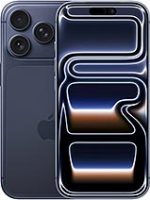
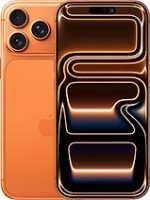
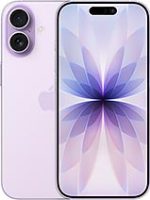
|
